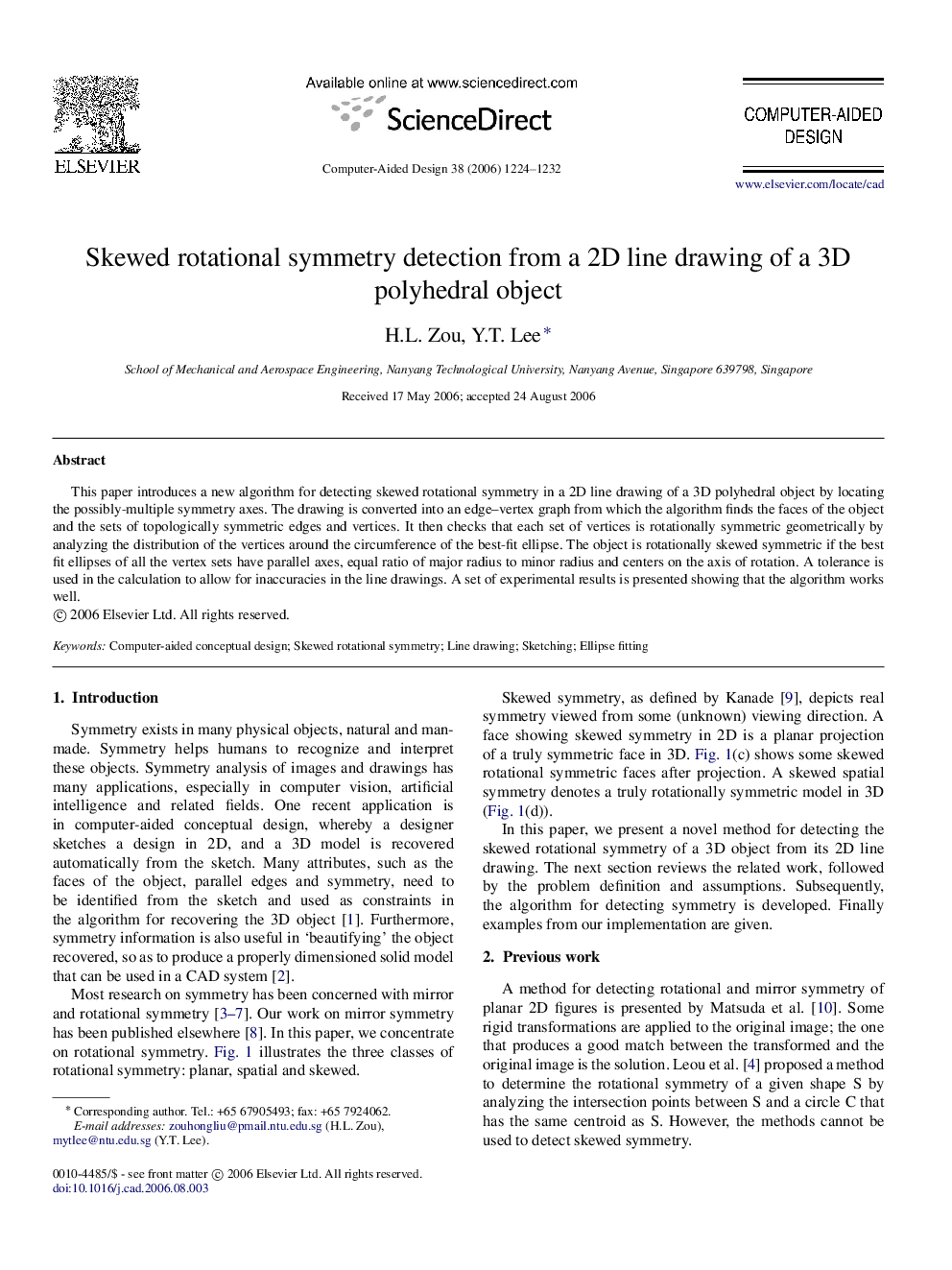| Article ID | Journal | Published Year | Pages | File Type |
|---|---|---|---|---|
| 440544 | Computer-Aided Design | 2006 | 9 Pages |
This paper introduces a new algorithm for detecting skewed rotational symmetry in a 2D line drawing of a 3D polyhedral object by locating the possibly-multiple symmetry axes. The drawing is converted into an edge–vertex graph from which the algorithm finds the faces of the object and the sets of topologically symmetric edges and vertices. It then checks that each set of vertices is rotationally symmetric geometrically by analyzing the distribution of the vertices around the circumference of the best-fit ellipse. The object is rotationally skewed symmetric if the best fit ellipses of all the vertex sets have parallel axes, equal ratio of major radius to minor radius and centers on the axis of rotation. A tolerance is used in the calculation to allow for inaccuracies in the line drawings. A set of experimental results is presented showing that the algorithm works well.
